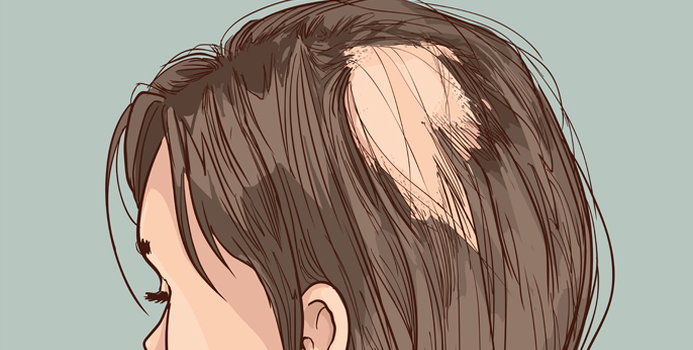Alopecia areata is an autoimmune disorder in which the body attacks the hair follicles, and according to WebMD, the result is hair falling out in clumps, often the size and shape of a quarter (several centimeters or less).
According to Medical News Today, the condition affects roughly 6.8 million people in the United States, and can develop suddenly over the course of a few days, although it is more common in people who are under the age of 30. The publication also reports that around one in five people also have a relative who has experienced the condition and that there is little evidence to suggest that alopecia areata is linked to stress.
This sudden hair loss can occur on the scalp or other parts of the body, and Healthline reports that it rarely results in complete hair loss. Hair loss is unpredictable, and the effect of the hair loss and growth is different for each person, as some people lose a lot of hair, and others only experience it in a few spots.
In more rare cases, individuals can experience total hair loss of the scalp known as alopecia totalis, or total hair loss of the entire body, a condition known as alopecia universalis.
Unfortunately, there is currently no cure for alopecia areata, but it can be treated to help the hair grow back faster and reduce the rate of hair loss. According to Healthline, you can rub medications such as minoxidil (Rogaine) on the affected scalp, and WebMD notes that the more common form of alopecia areata can be treated with anti-inflammatory drugs corticosteroids, which can be given in an injection form, or as pills, creams, and ointments.
There are also alternative solutions, including vitamins and herbal supplements, as well as aromatherapy and acupuncture. People with alopecia areata can also benefit from wearing sunscreen and headwear to protect from the elements.
[Image via Shutterstock]



